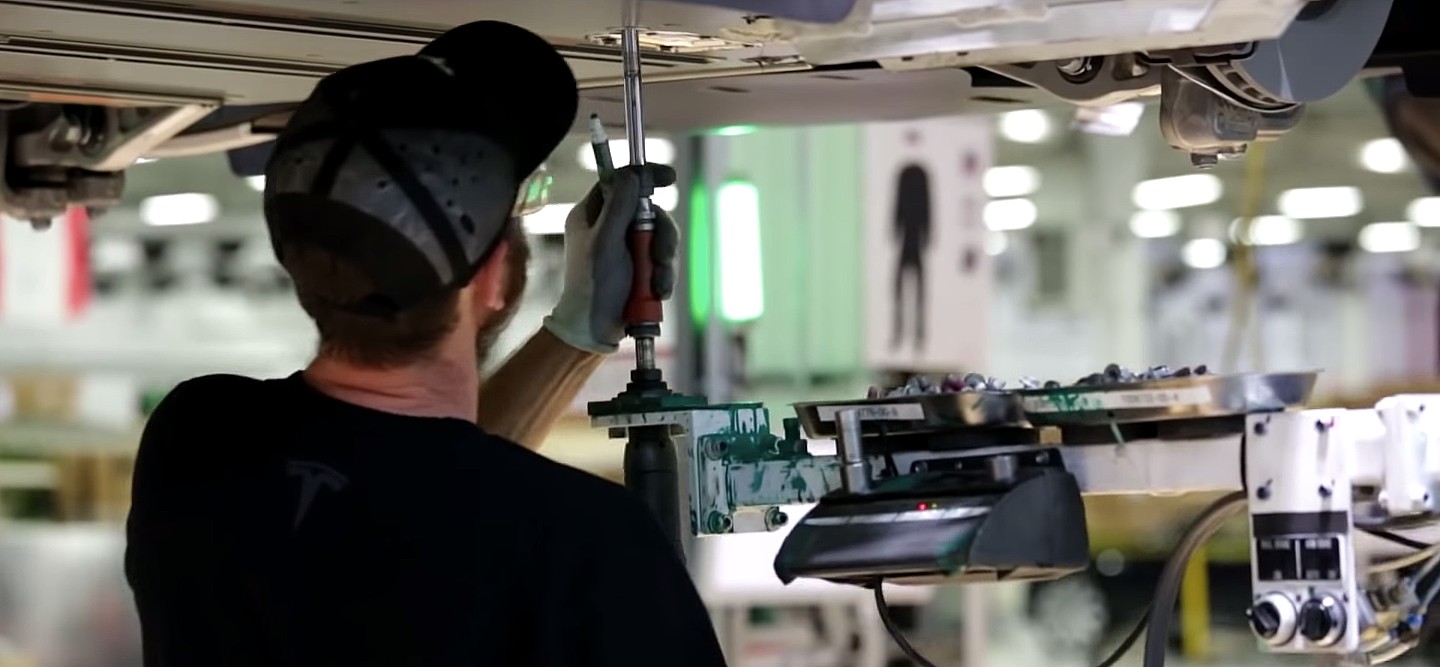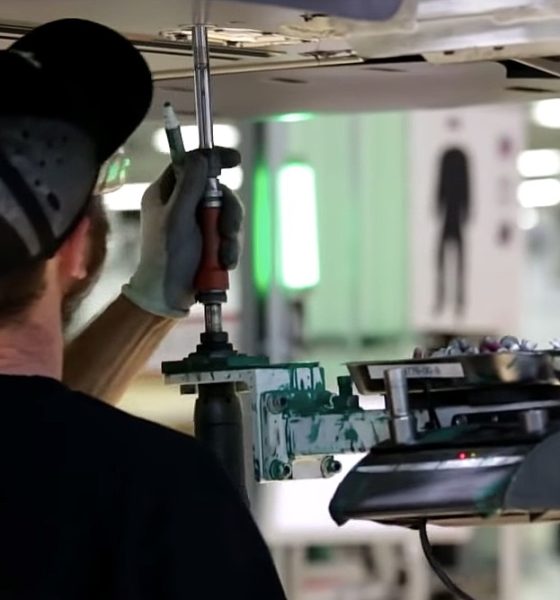

News
Tesla adopts straightforward and firm stance on employee language and respect
Tesla VP, People Valerie Capers Workman recently published a note for employees returning to the company’s offices this month. The VP’s message was clear: Tesla is very particular about how employees treat each other, and it will not tolerate any form of derogatory language or expressions.
Workman explained that Tesla is committed to building a work culture that is safe, respectful, fair, and inclusive for all its employees. With this in mind, the VP reminded employees that some of the language people use outside of work should not be used while they are in the workplace. Her note referred to epithets and slurs that were initially intended to demean and dehumanize targeted communities but were later reclaimed and transformed into terms of endearment.
The VP gave several examples of such words, such as the N-word, which is derogatory but has since been reclaimed by the African American community into a term of endearment or a way to punctuate self-aware humor. Workman cited other negative words that have since been reclaimed, such as the B-word for women, which is now used as a friendly quip among friends, or the Q-word, which is used similarly among the LGBTQ+ community.
But while it could be empowering to redefine negative and derogatory words into something positive, Workman noted that using such words in the workplace is still a slippery slope. “It can be empowering to take what was meant to harm you and instead redefine and own it on your own terms. This is by no means limited to one group of people—every community has ways of communicating to and about each other that if used by someone not in that community, would cause pain and offense,” she wrote.
With this in mind, and considering the complicated nature of the social issues associated with the use of reclaimed words, Workman noted that slurs, epithets or derogatory expressions — regardless of their intent or whether they were used appropriately amongst community members — would not be tolerated at Tesla.
“This is a complicated social issue. But at Tesla, it’s a distraction away from our mission to try to debate the acceptable and prohibited uses of these words. So we don’t. Tesla expressly forbids all such slurs, epithets or derogatory expressions based on any characteristics a person may have. Regardless of intent. And per our longstanding policies, we will take immediate disciplinary action if we find that any employee has used these words towards anyone at our work locations,” Workman wrote.
Tesla is quite progressive in the way that it ensures that virtually every employee can own part of the company. This is one of the reasons why the company has received a perfect equality rating for LGTBTQ workers for six consecutive years. The Human Rights Campaign Corporate Equality Index dubbed Tesla one of 2021’s Best Places to Work for LGBTQ Equality. Workman highlighted Tesla’s achievement in her post.
“We are accelerating the world’s transition to sustainable energy and producing the most exciting and innovative vehicles and energy products on Earth. At the same time, we must do all we can to ensure that Tesla continues to be an inclusive and welcoming environment for everyone. This means leaving exclusionary language—no matter how well-intentioned—at our workplace doors,” Workman concluded.
The Teslarati team would appreciate hearing from you. If you have any tips, reach out to me at maria@teslarati.com or via twitter @Writer_01001101.

News
Tesla starts showing how FSD will change lives in Europe
Local officials tested the system on narrow country roads and were impressed by FSD’s smooth, human-like driving, with some calling the service a game-changer for everyday life in areas that are far from urban centers.

Tesla has launched Europe’s first public shuttle service using Full Self-Driving (Supervised) in the rural Eifelkreis Bitburg-Prüm region of Germany, demonstrating how the technology can restore independence and mobility for people who struggle with limited transport options.
Local officials tested the system on narrow country roads and were impressed by FSD’s smooth, human-like driving, with some calling the service a game-changer for everyday life in areas that are far from urban centers.
Officials see real impact on rural residents
Arzfeld Mayor Johannes Kuhl and District Administrator Andreas Kruppert personally tested the Tesla shuttle service. This allowed them to see just how well FSD navigated winding lanes and rural roads confidently. Kruppert said, “Autonomous driving sounds like science fiction to many, but we simply see here that it works totally well in rural regions too.” Kuhl, for his part, also noted that FSD “feels like a very experienced driver.”
The pilot complements the area’s “Citizen Bus” program, which provides on-demand rides for elderly residents who can no longer drive themselves. Tesla Europe shared a video of a demonstration of the service, highlighting how FSD gives people their freedom back, even in places where public transport is not as prevalent.
What the Ministry for Economic Affairs and Transport says
Rhineland-Palatinate’s Minister Daniela Schmitt supported the project, praising the collaboration that made this “first of its kind in Europe” possible. As per the ministry, the rural rollout for the service shows FSD’s potential beyond major cities, and it delivers tangible benefits like grocery runs, doctor visits, and social connections for isolated residents.
“Reliable and flexible mobility is especially vital in rural areas. With the launch of a shuttle service using self-driving vehicles (FSD supervised) by Tesla in the Eifelkreis Bitburg-Prüm, an innovative pilot project is now getting underway that complements local community bus services. It is the first project of its kind in Europe.
“The result is a real gain for rural mobility: greater accessibility, more flexibility and tangible benefits for everyday life. A strong signal for innovation, cooperation and future-oriented mobility beyond urban centers,” the ministry wrote in a LinkedIn post.
News
Tesla China quietly posts Robotaxi-related job listing
Tesla China is currently seeking a Low Voltage Electrical Engineer to work on circuit board design for the company’s autonomous vehicles.

Tesla has posted a new job listing in Shanghai explicitly tied to its Robotaxi program, fueling speculation that the company is preparing to launch its dedicated autonomous ride-hailing service in China.
As noted in the listing, Tesla China is currently seeking a Low Voltage Electrical Engineer to work on circuit board design for the company’s autonomous vehicles.
Robotaxi-specific role
The listing, which was shared on social media platform X by industry watcher @tslaming, suggested that Tesla China is looking to fill the role urgently. The job listing itself specifically mentions that the person hired for the role will be working on the Low Voltage Hardware team, which would design the circuit boards that would serve as the nervous system of the Robotaxi.
Key tasks for the role, as indicated in the job listing, include collaboration with PCB layout, firmware, mechanical, program management, and validation teams, among other responsibilities. The role is based in Shanghai.
China Robotaxi launch
China represents a massive potential market for robotaxis, with its dense urban centers and supportive policies in select cities. Tesla has limited permission to roll out FSD in the country, though despite this, its vehicles have been hailed as among the best in the market when it comes to autonomous features. So far, at least, it appears that China supports Tesla’s FSD and Robotaxi rollout.
This was hinted at in November, when Tesla brought the Cybercab to the 8th China International Import Expo (CIIE) in Shanghai, marking the first time that the autonomous two-seater was brought to the Asia-Pacific region. The vehicle, despite not having a release date in China, received a significant amount of interest among the event’s attendees.
Elon Musk
Elon Musk and Tesla AI Director share insights after empty driver seat Robotaxi rides
The executives’ unoccupied tests hint at the rapid progress of Tesla’s unsupervised Robotaxi efforts.

Tesla CEO Elon Musk and AI Director Ashok Elluswamy celebrated Christmas Eve by sharing personal experiences with Robotaxi vehicles that had no safety monitor or occupant in the driver’s seat. Musk described the system’s “perfect driving” around Austin, while Elluswamy posted video from the back seat, calling it “an amazing experience.”
The executives’ unoccupied tests hint at the rapid progress of Tesla’s unsupervised Robotaxi efforts.
Elon and Ashok’s firsthand Robotaxi insights
Prior to Musk and the Tesla AI Director’s posts, sightings of unmanned Teslas navigating public roads were widely shared on social media. One such vehicle was spotted in Austin, Texas, which Elon Musk acknowleged by stating that “Testing is underway with no occupants in the car.”
Based on his Christmas Eve post, Musk seemed to have tested an unmanned Tesla himself. “A Tesla with no safety monitor in the car and me sitting in the passenger seat took me all around Austin on Sunday with perfect driving,” Musk wrote in his post.
Elluswamy responded with a 2-minute video showing himself in the rear of an unmanned Tesla. The video featured the vehicle’s empty front seats, as well as its smooth handling through real-world traffic. He captioned his video with the words, “It’s an amazing experience!”
Towards Unsupervised operations
During an xAI Hackathon earlier this month, Elon Musk mentioned that Tesla owed be removing Safety Monitors from its Robotaxis in Austin in just three weeks. “Unsupervised is pretty much solved at this point. So there will be Tesla Robotaxis operating in Austin with no one in them. Not even anyone in the passenger seat in about three weeks,” he said. Musk echoed similar estimates at the 2025 Annual Shareholder Meeting and the Q3 2025 earnings call.
Considering the insights that were posted Musk and Elluswamy, it does appear that Tesla is working hard towards operating its Robotaxis with no safety monitors. This is quite impressive considering that the service was launched just earlier this year.








